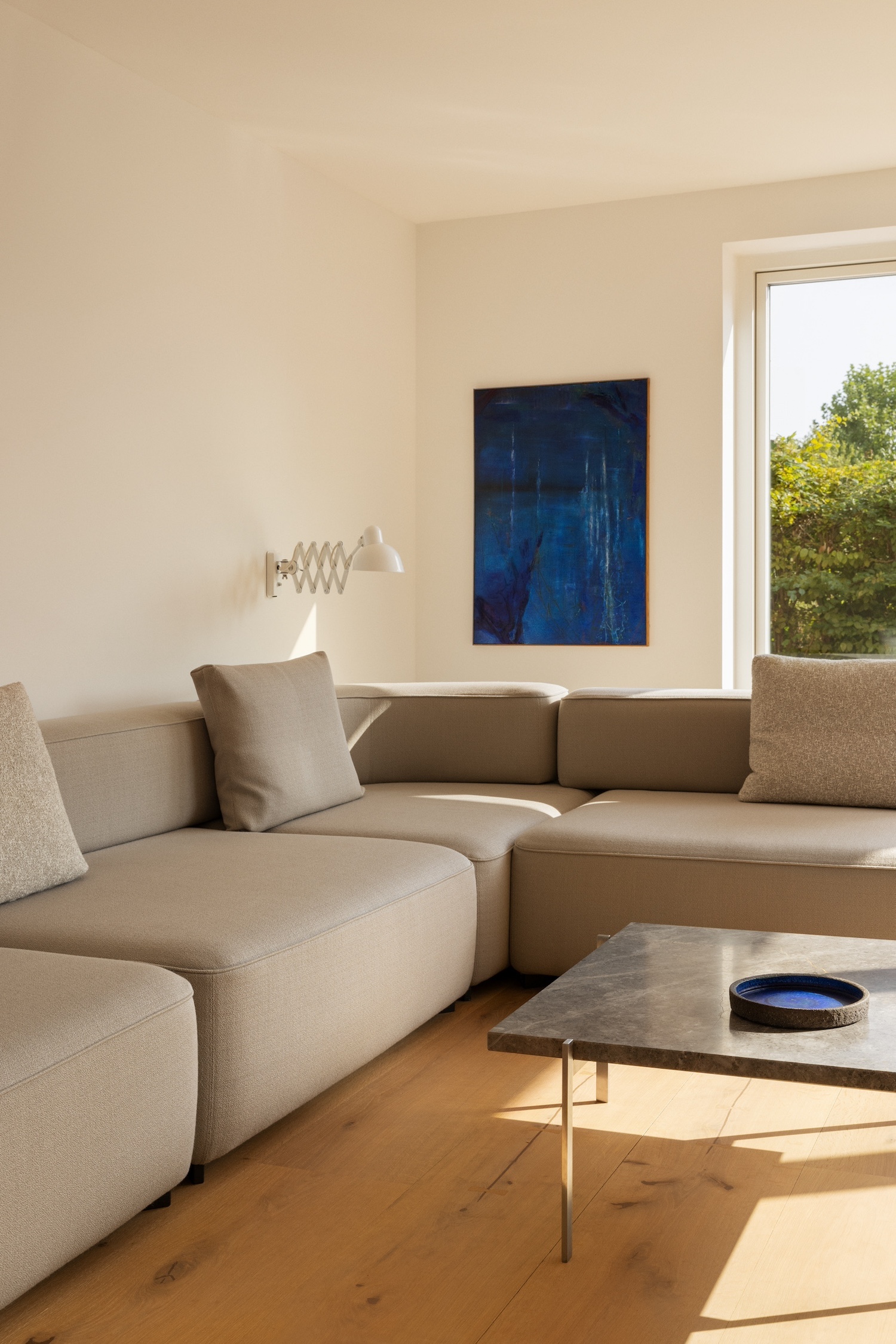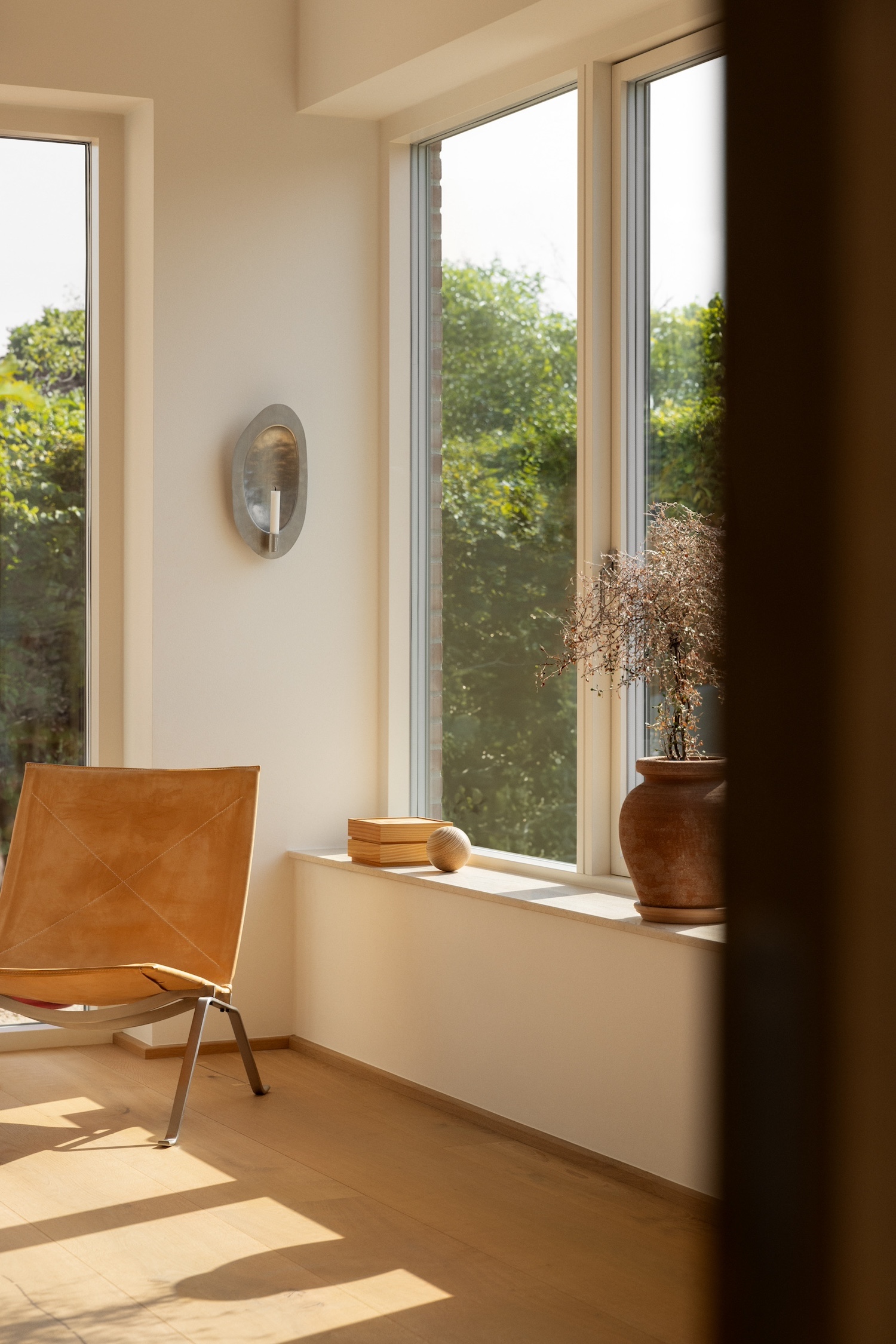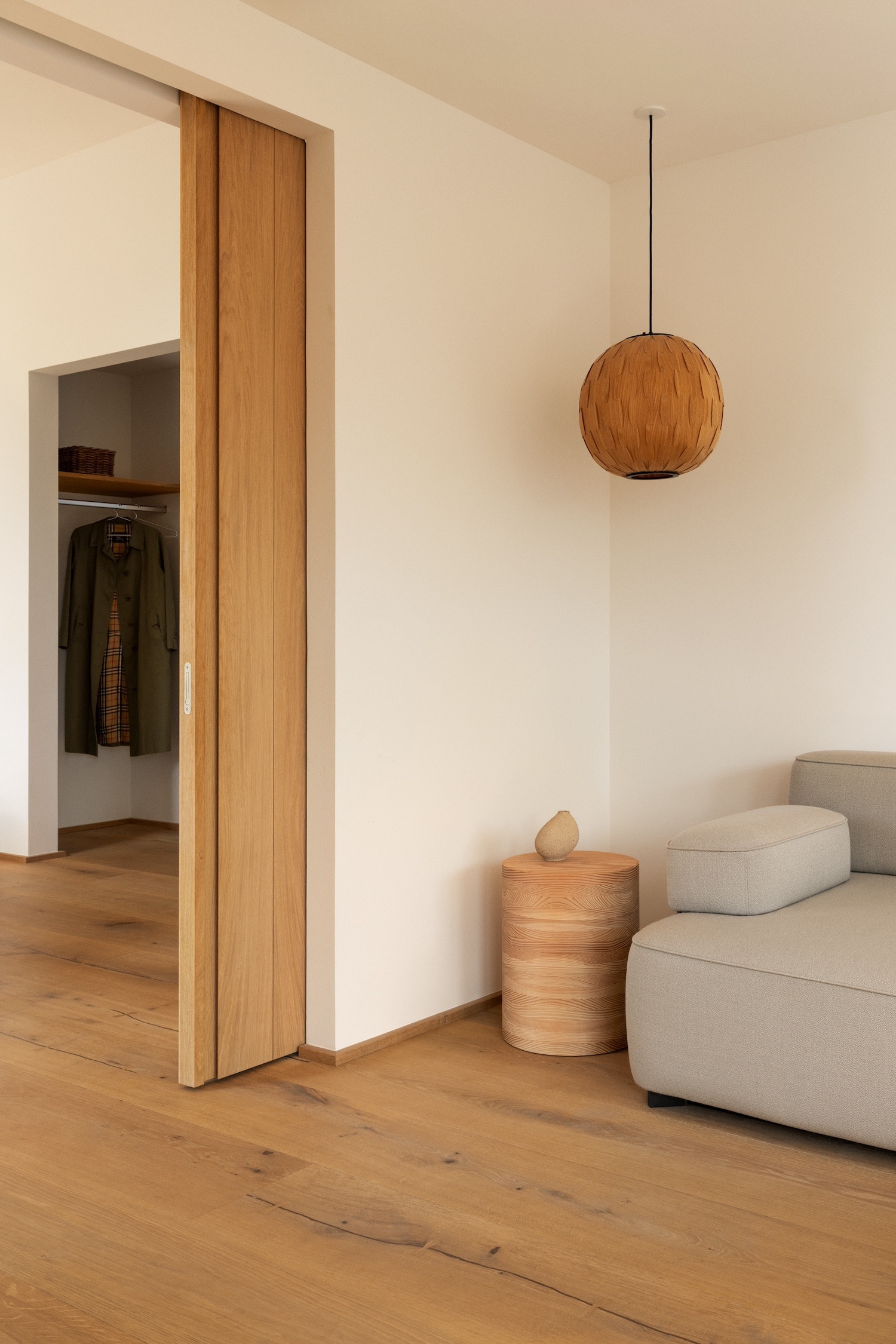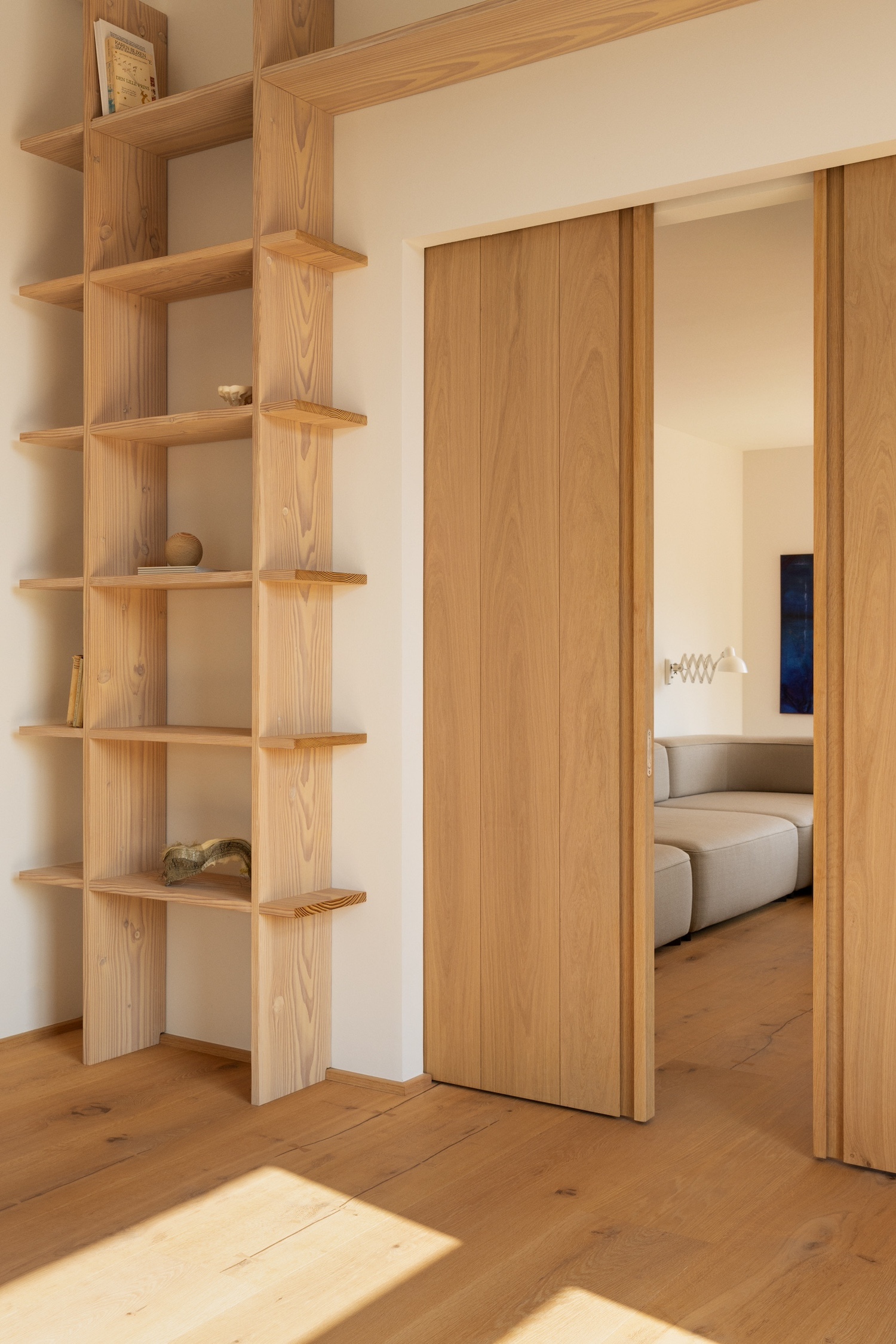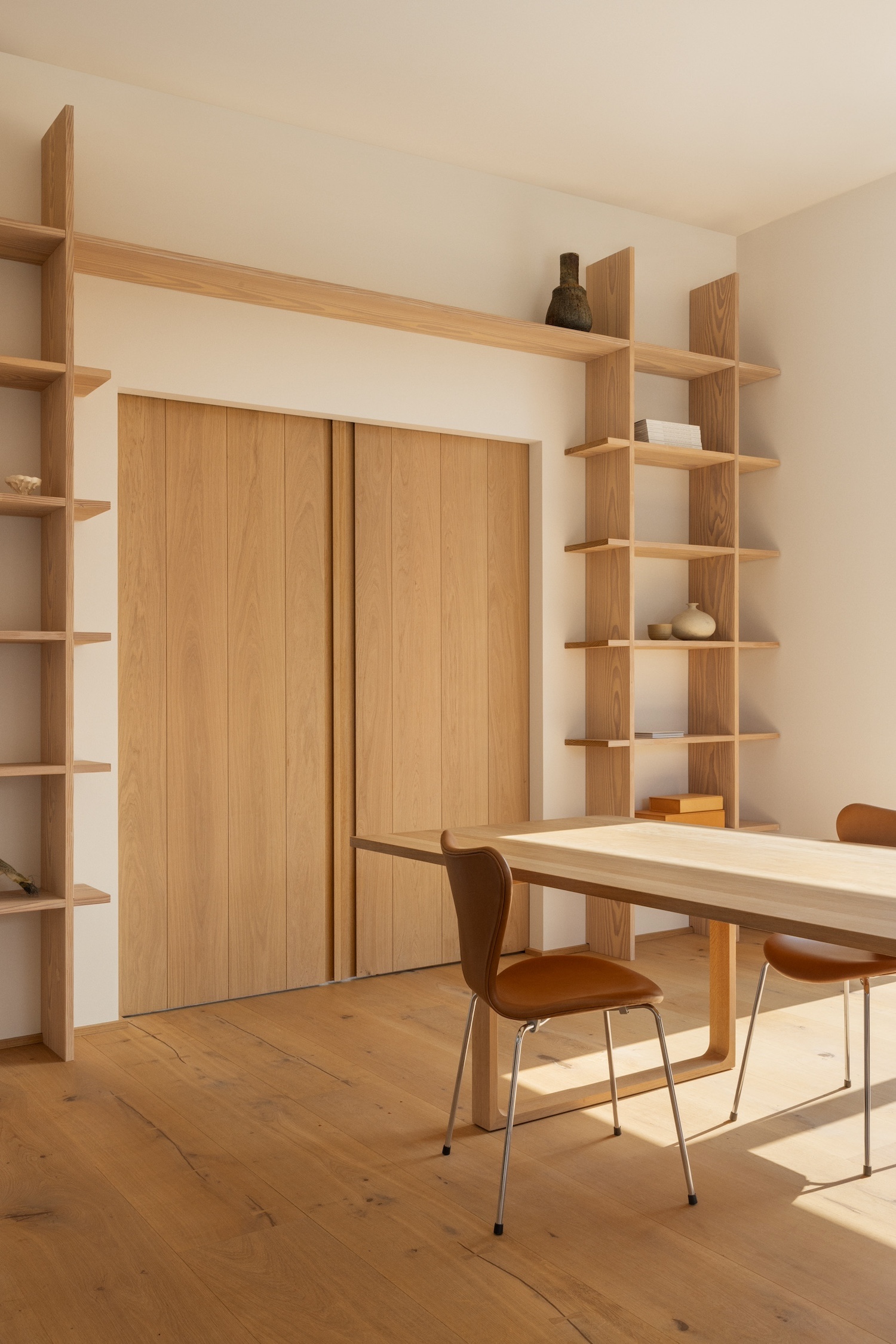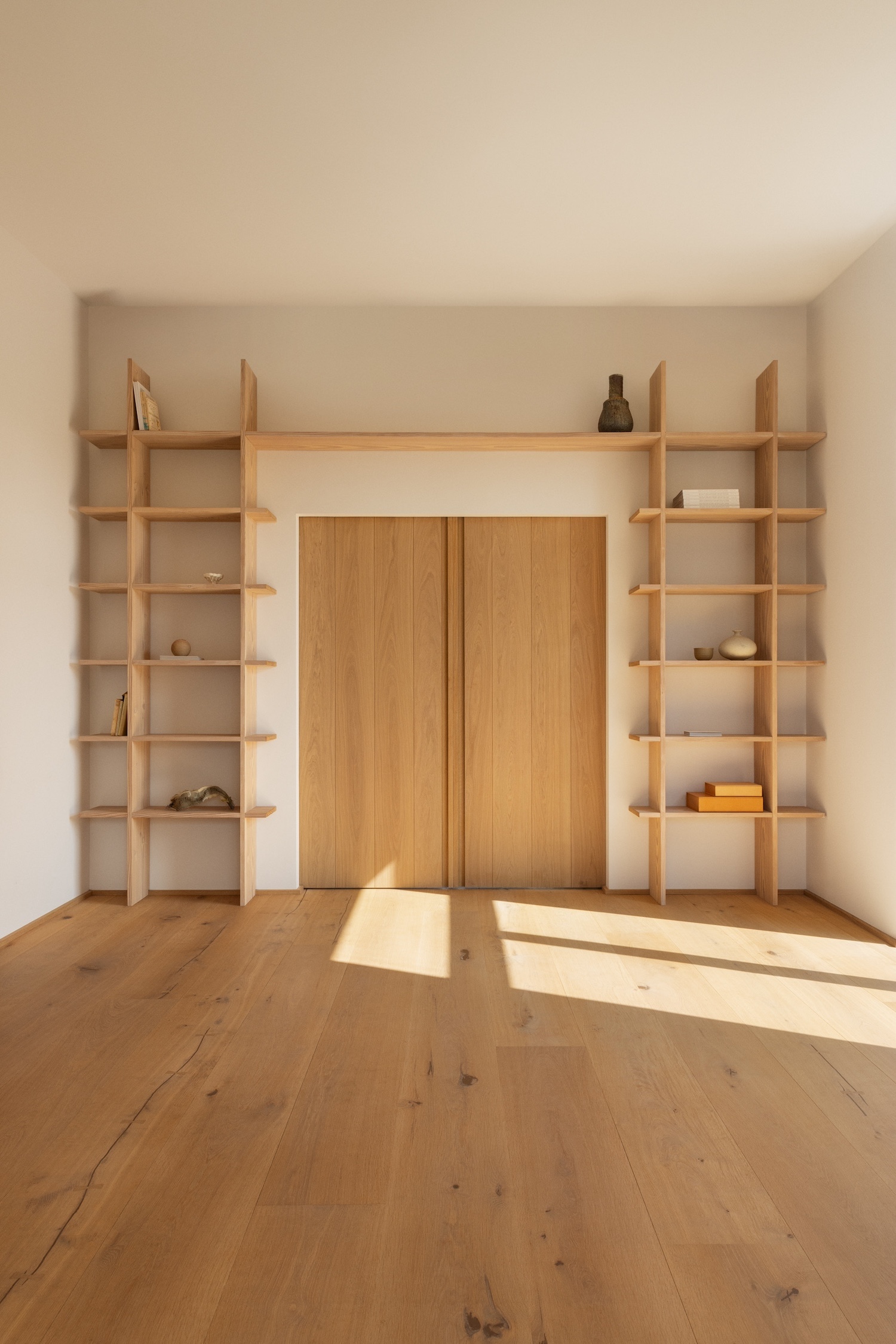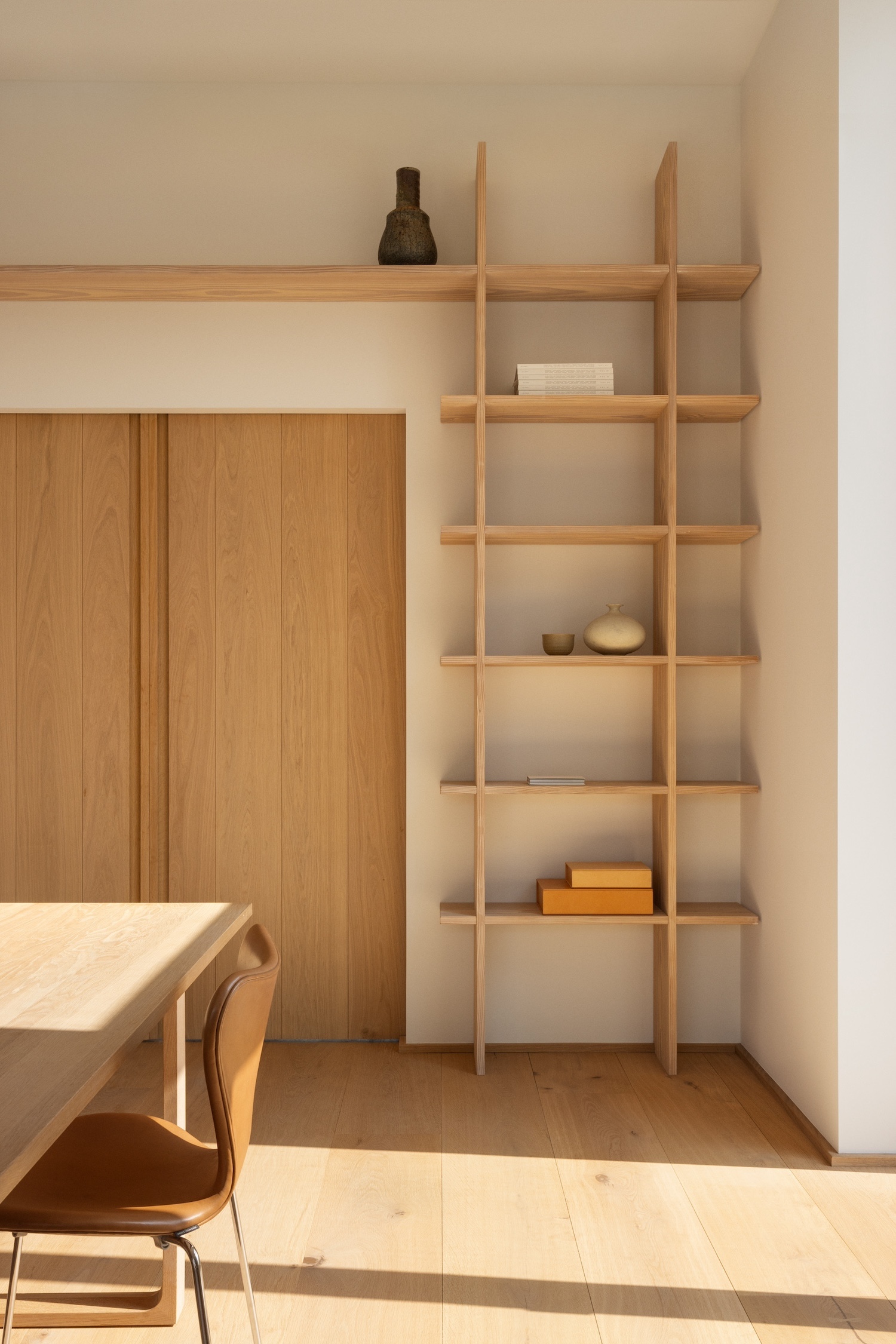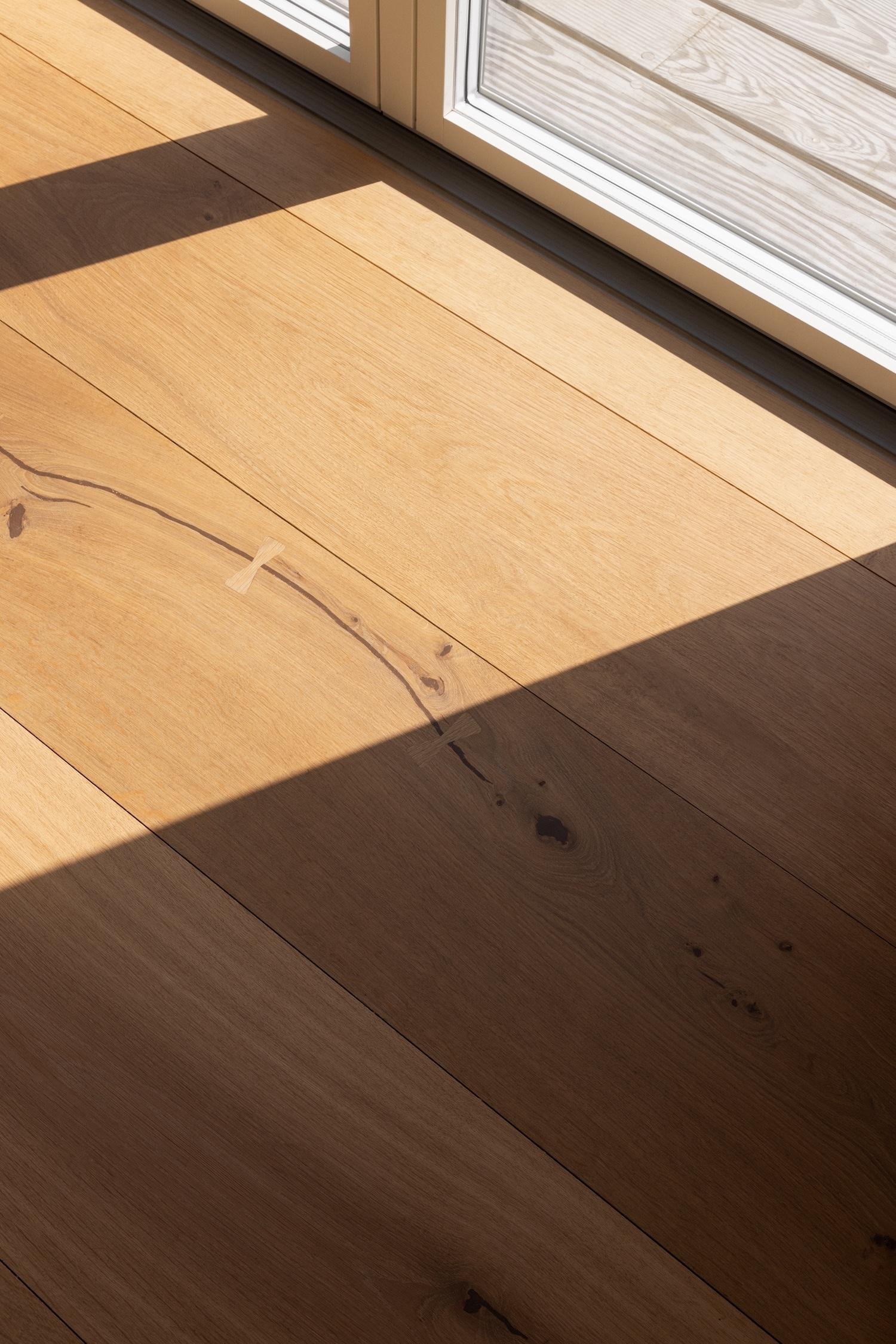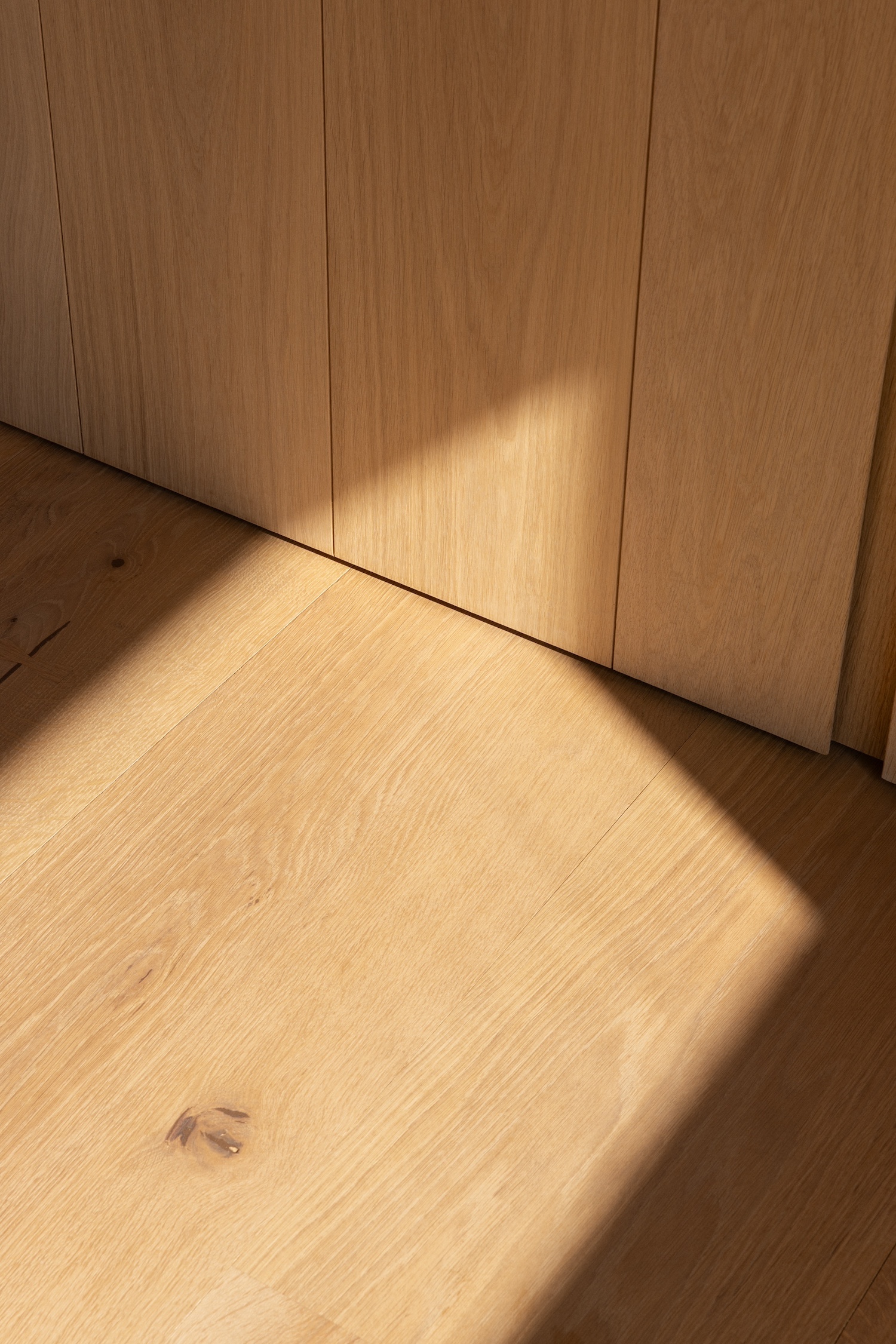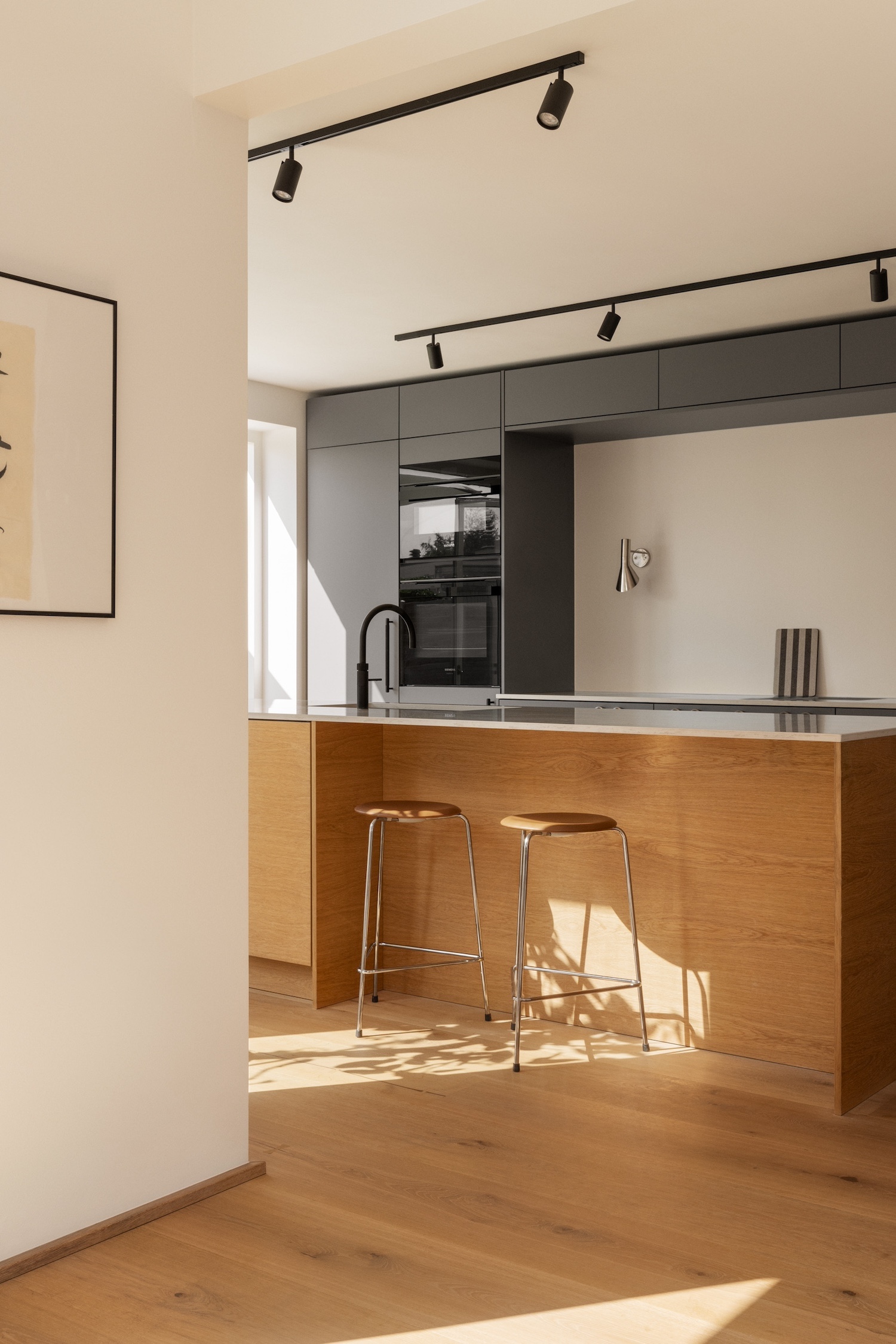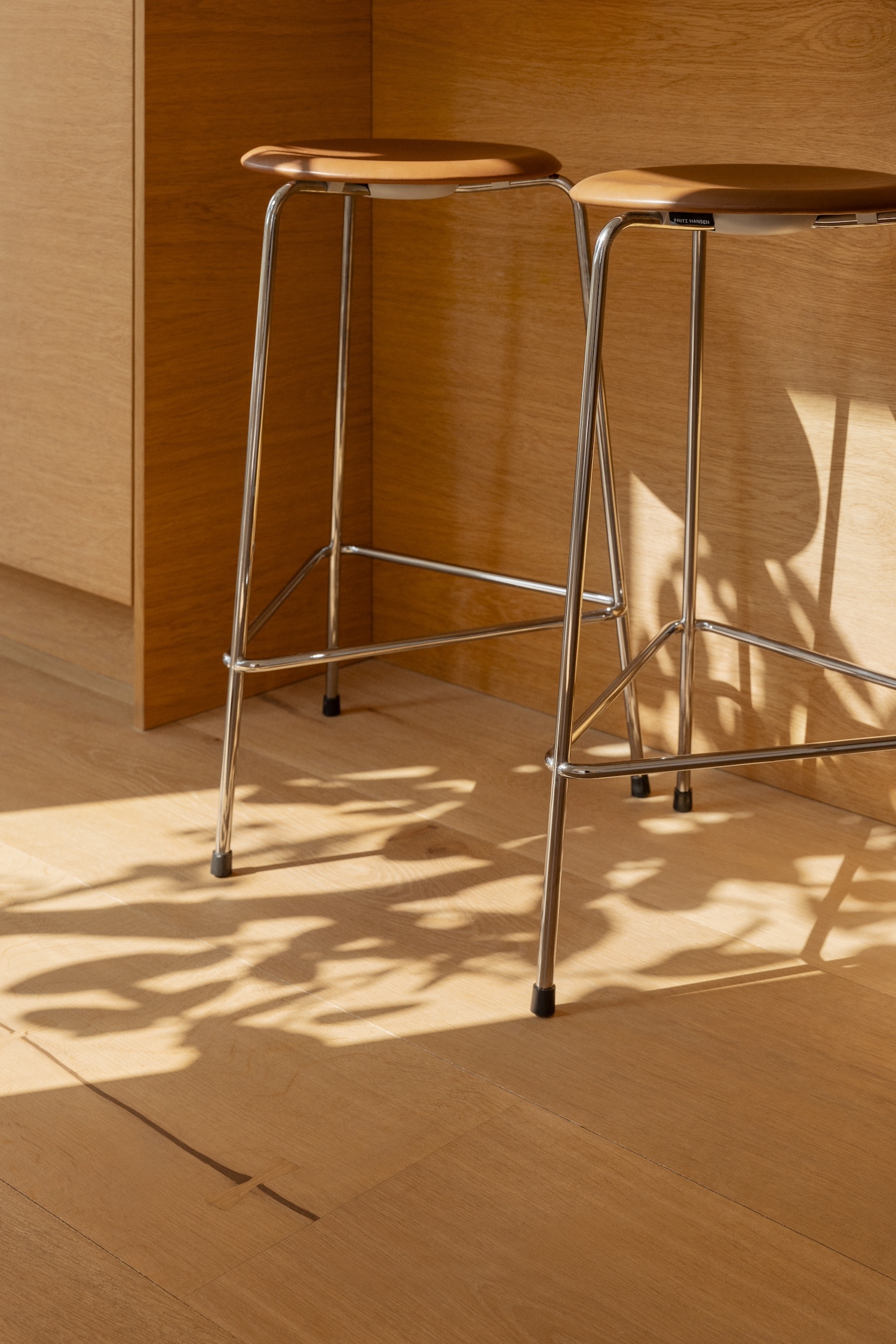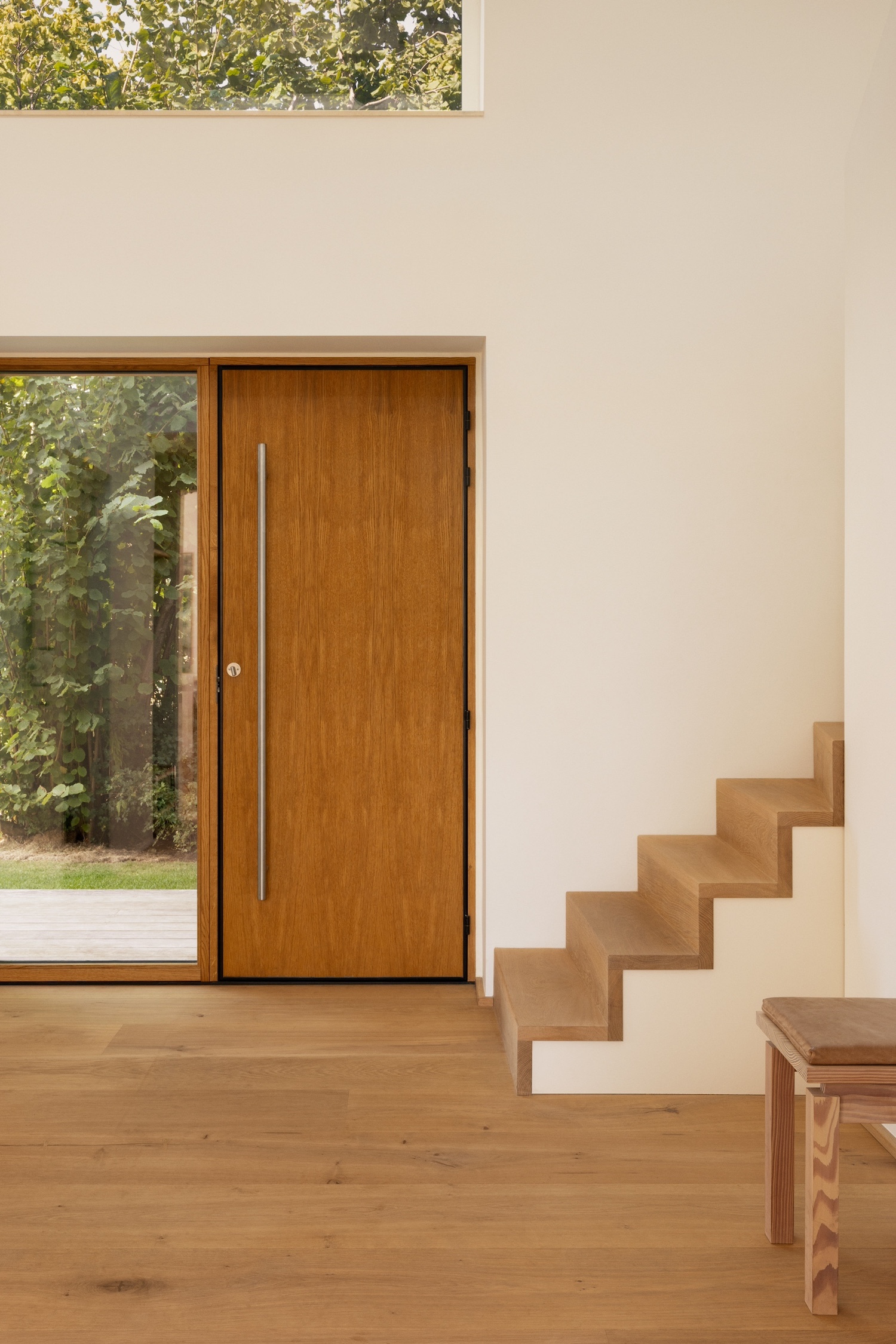Villa Rungsted is a minimal home located in Rungsted, Denmark, designed in collaboration between Dinesen’s Head of Marketing Regitze Bøegh-Beyerholm and Tue Hesselberg Foged, founding partner of the architecture firm EFFEKT. A butterfly joint marks the seam in a HeartOak floor – a detail so subtle yet profound in the Danish family home. This small architectural gesture carries within it the entire ethos of the residence: a celebration of natural imperfection transformed through craftsmanship into deliberate beauty.
The home’s thoughtful siting maximizes sunlight and views, while remaining intimately connected to its coastal environment – just a few hundred meters from the Øresund with a shared bathing pier that transforms daily sea visits into a family ritual. This dialogue between architecture and landscape reflects a deeply rooted Danish design principle: homes should serve as frames for living, not merely as shelters.
The approach begins at the entrance, where an oak door – showcasing Dinesen’s signature craftsmanship – opens to reveal oak steps in the hallway. Throughout the interior, HeartOak flooring with its distinctive butterfly joints creates visual continuity while honoring the material’s natural character. These joints, traditionally used to stabilize cracks in timber, become elevated from mere structural necessity to decorative elements that celebrate the wood’s history and journey.
Oak appears again in the large sliding doors that divide the dining and living spaces – functional elements that transform into architectural features. This thoughtful deployment of wood serves multiple purposes: aesthetic warmth, acoustic modulation, and subtle spatial definition. The material becomes both medium and message.
What distinguishes this home from contemporary trends is its deliberate rejection of open-plan living. Instead, the design creates distinct zones that foster intimacy while maintaining flow between spaces. This approach recalls mid-century Danish housing principles where rooms served specific functions yet remained connected – a counterpoint to today’s preference for vast, undifferentiated interiors.


